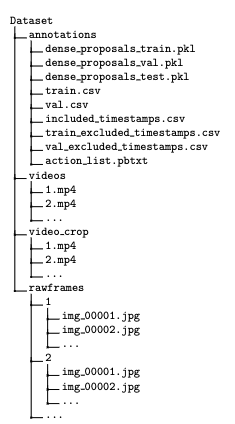上次写完 iOS 动画基础部分的文章后,为了更加系统、准确的总结动画部分的知识,特地花了不少时间学习了这个方向的知识。对于开发者来说动画的实现过程是非常有趣的,而且动画会让我们的 APP 变的富有生命力。这篇文章讲介绍 UIKit 框架中的动画接口,大多数情况下这些高级接口完全能满足我们的动画实现的需求。
接下来我们通过基础动画、弹簧动画来讲解 UIKit 中动画的一些基础内容。
基本动画
UIKit 中基本动画效果如下图所示,接下来我们对照动图分析它的实现步骤以及细节。
动画无非就是控件状态变化的过程,所以首先要做的就是设置动画的初始状态。而初始状态无非就是 UIView 对象的属性进行一些设置,这些属性大抵可分为:位置与大小、背景色、透明度、旋转角度。上图演示的动画中,两个 UITextField 和一个 UILabel 从左到右出现,而两个 UIImageView 从透明到出现,所以我们在 viewWillAppear 设置如下代码:
override func viewWillAppear(_ animated: Bool) {
super.viewWillAppear(animated)
heading.center.x -= view.bounds.width
username.center.x -= view.bounds.width
password.center.x -= view.bounds.width
cloud1.alpha = 0
cloud2.alpha = 0
}
接下来就是动画过程,也就是时间线加上最终的属性值,而这个实现是通过以下高级 API 接口实现的:
animate(withDuration duration: TimeInterval,animations: @escaping () -> Void) animate(withDuration duration: TimeInterval,animations: @escaping () -> Void,completion: ((Bool) -> Void)? = nil) animate(withDuration duration: TimeInterval,delay: TimeInterval,options: UIViewAnimationoptions = [],completion: ((Bool) -> Void)? = nil)
从上到下功能逐渐丰富,第一个函数仅仅是完成动画,第二个函数则增加了动画完成后的收尾处理闭包,而最后一个不仅添加了延迟启动参赛更有动画效果的设置参数。参数的解释如下:
withDuration:动画时长
delay:动画延迟开始的时长
options:动画过度的选项
animations:动画最终结果设置闭包
completion:动画结束的收尾闭包
override func viewDidAppear(_ animated: Bool) {
super.viewDidAppear(animated)
UIView.animate(withDuration: 0.5,animations: {
self.heading.center.x += self.view.bounds.width
})
UIView.animate(withDuration: 0.5,delay: 0.3,options: [],animations: {
self.username.center.x += self.view.bounds.width
},completion: nil)
UIView.animate(withDuration: 0.5,delay: 0.4,animations: {
self.password.center.x += self.view.bounds.width
},completion: nil)
UIView.animate(withDuration: 0.2,delay: 0.5,animations: {
self.cloud1.alpha = 1
},delay: 0.6,animations: {
self.cloud2.alpha = 1
},completion: nil)
}
你可能注意到了上面代码中 options 参数都没有设置有效值,下面我们介绍下 options 参数的一些常用数值。
repeat: 表示该动画循环展示。
autoreverse:表示该动画反向进行,需要与 repeat 一同使用。
curveEaseIn:表示动画由慢到快一直加速。
curveEaSEOut:表示动画由快到慢全程减速。
curveLinear:表示动画全程匀速。
override func viewDidAppear(_ animated: Bool) {
super.viewDidAppear(animated)
UIView.animate(withDuration: 0.5,animations: {
self.heading.center.x += self.view.bounds.width
})
UIView.animate(withDuration: 0.5,options: [.curveEaseIn],options: [.curveEaSEOut],options: [.curveEaseInOut],options: [.repeat,.autoreverse],completion: nil)
}
弹簧动画
不同于上一部分的基础动画的单一方向进行,弹簧动画会在动画的过程中出现类似于弹簧那样的震荡衰减的效果。这种动画效果在 iOS 系统中得到广泛采用,因为它的效果更接近于真实世界。
在上面的基础上,我们对登录按键实现弹簧动画。步骤于上面一致,先设置动画起始时的状态,添加如下代码:
override func viewWillAppear(_ animated: Bool) {
...
loginButton.center.y += 30.0
loginButton.alpha = 0.0
}
紧接着我们调用动画接口进行实现:
override func viewDidAppear(_ animated: Bool) {
...
UIView.animate(withDuration: 0.5,usingSpringWithdamping: 0.5,initialSpringVeLocity: 0.0,animations: {
self.loginButton.center.y -= 30.0
self.loginButton.alpha = 1.0
},completion: nil)
}
上面的代码中有两个要点:
弹簧动画是通过函数 animate(withDuration:delay:usingSpringWithdamping:initialSpringVeLocity:opti ons:animations:completion:) 来实现的。
此处使用的函数与之前的基础动画函数并没有太多的差别,只不过多了两个参数:
usingSpringWithdamping:动画的阻尼系数,阻尼系数的取值范围为 0.0 ~ 1.0。数值越小震动幅度越大,你也可以将其看作是弹簧的刚度。
initialSpringVeLocity:动画的初始速度。
效果图如下:
总结
除了略坑的 Xcode 和捉急的 Swift 自动补全,Apple 还是为开发者作了不少的工作。例如,上面动画内容提到的接口就足够大家应对简单的动画交互场景了。当然比较复杂的动画内容将会在下篇文章中奉上。






